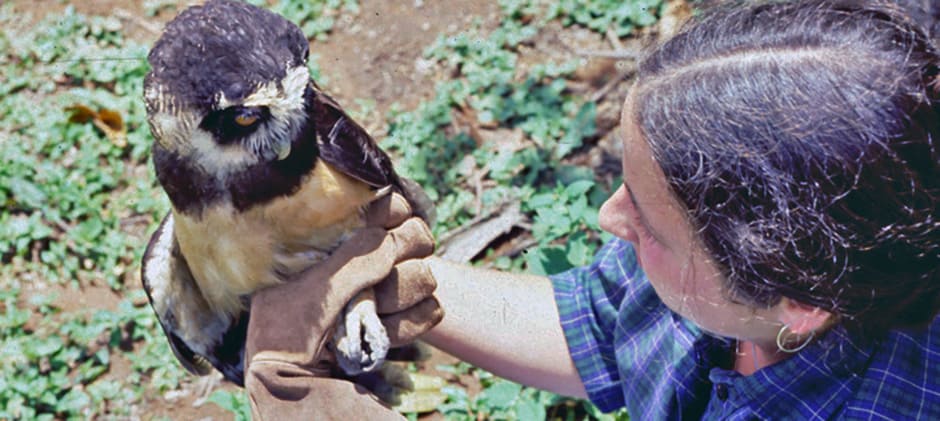Share this article
TWS2021: Surveying El Salvador’s owls
Surveys through the diverse ecosystems of El Salvador have revealed a complex community of owls in a relatively small country. The research sets a baseline for what owl species live there and their abundance, which can be used in the future to track changes in populations.
El Salvador is a small country with a dense human population. But despite its size, the Central American country has a diverse range of ecosystem types. Althea Archer, a data visualization specialist at the U.S. Geological Survey and TWS member, and her colleagues believed owl occurrence might be a good indicator of overall ecosystem health.
In research she presented at The Wildlife Society’s virtual 2021 Annual Conference, Archer described the results of owl surveys conducted at three national parks in El Salvador.
Between 2003 and 2013—with the exception of 2006—Archer’s colleague Jane West, a retired division chief at the U.S. Fish and Wildlife Service, and others ventured out to El Imposible National Park, Montecristo National Park, and Nancuchiname Forest. In two areas of each park, between March and May, they stopped at certain points to listen for owl calls. They also played back the sounds of some species at each point and listened for owls responding.
In total, the researchers documented 1,211 owl calls in the study areas. Previous research reported the occurrences of 13 owl species in the small Central American country. But the recent surveys only found evidence of eight of those species. However, the researchers did hear the calls of a species that wasn’t previously recorded in El Salvador—the stygian owl (Asio stygius).
The remaining five species the researchers didn’t find included the crested owl (Lophostrix cristata), burrowing owl (A. cunicularia), striped owl (A. clamator), unspotted saw-whet owl (Aegolius ridgwayi), and the black-and-white owl (Strix nigrolineata). “[The black-and-white owl] was one we expected to see because Jane had detected it in a previous study,” said Archer, an assistant professor at St. Cloud State University in Minnesota at the time of this research.
Mottled owls (S. virgata) were the most frequently detected species in their surveys—a finding that supports other research indicating this species is fairly resilient to habitat changes. But ferruginous pygmy owls (Glaucidium brasilianum) appeared less frequently over time, possibly because they respond negatively to reductions in the forest edge habitats they prefer.
Spectacled owls (Pulsatrix perspicillata) were mostly only found along a river habitat surveyed. But the species was relatively abundant in these areas, which is good news, since the species is considered endangered in El Salvador. Spectacled owls showed up in five of the six survey areas. Surveys also turned up evidence of the fulvous owl (S. fulvescens), endangered as well, and the whiskered screech owl (Megascops trichopsis), considered threatened in El Salvador.
Overall, the researchers found more owl diversity in lower elevation areas, but more habitat specialists like the stygian owl at higher elevation cloud forests.
The team also found the calls they used to elicit owl responses at night may have played a factor in detection of the species. When researchers played the calls of great horned owls (Bubo virginianus), for example, they were less likely to hear responses from other owls, in general. This is likely because great horned owls prey on other smaller species of owls.
But when they played the calls of five species—black-and-white owls, spectacled owls, mottled owls, Pacific screech owls (M. cooperi) and crested owls—there was an increased chance of hearing responses from other species than the one being played on the recording.
The study generally found stable occupancy patterns over the 10 years of research. Archer said this research can form baseline knowledge for future researchers who want to compare the data to determine changes in occurrence or abundance of these owls.
Header Image: Researcher Jane West performs survey work in El Salvador with a spectacled owl. Credit: Courtesy Jane West








